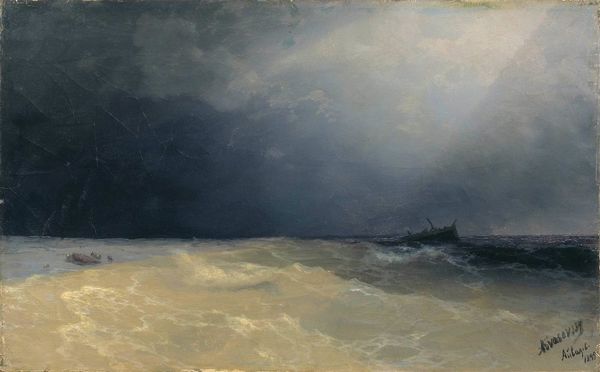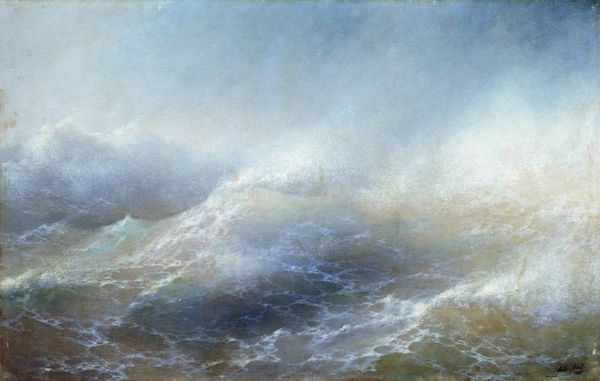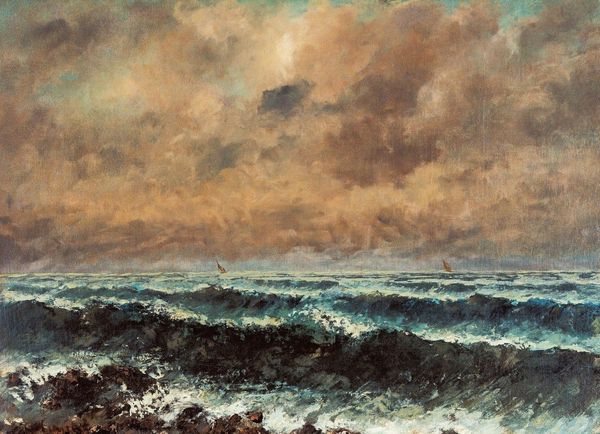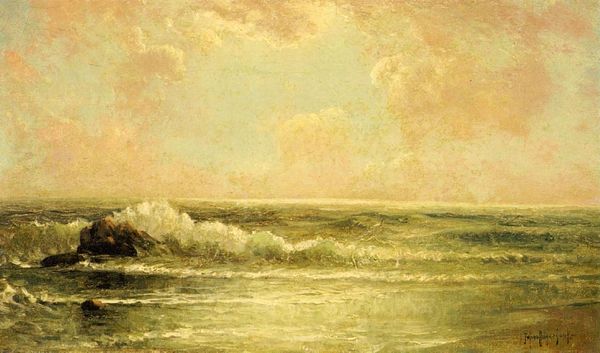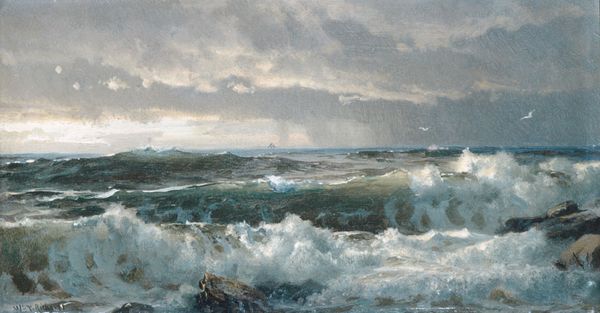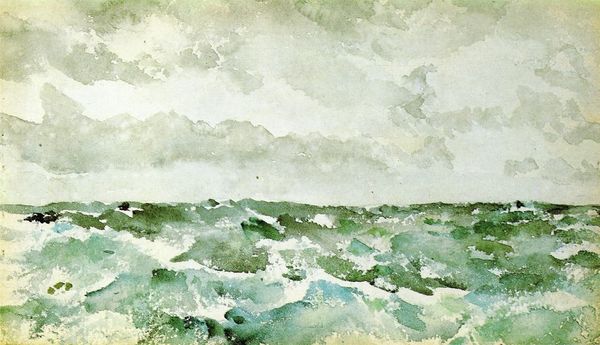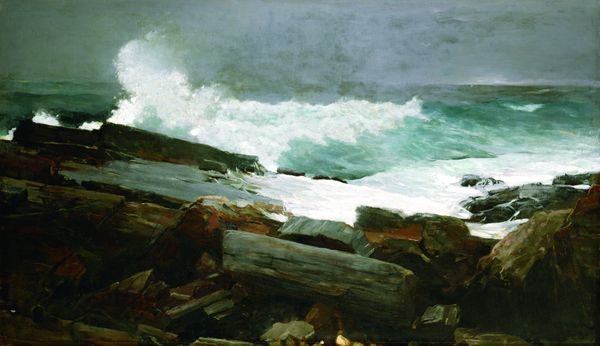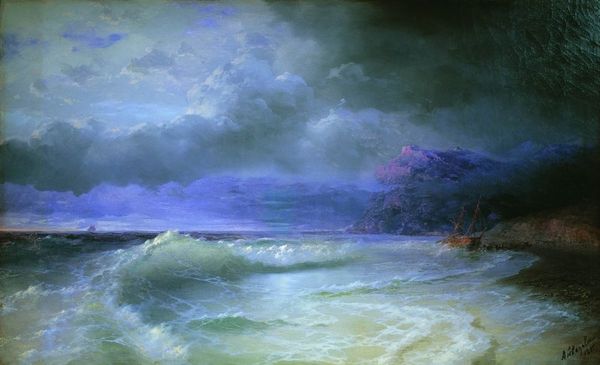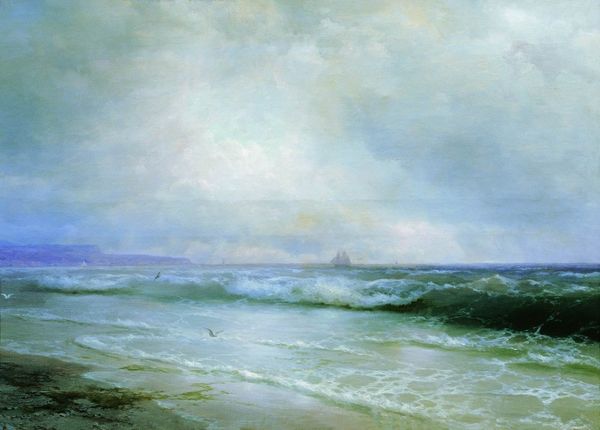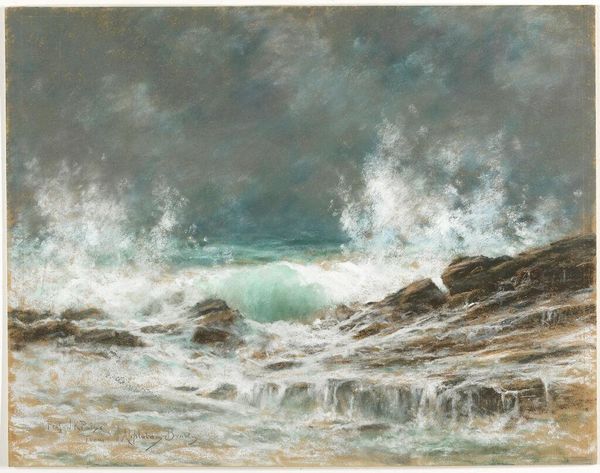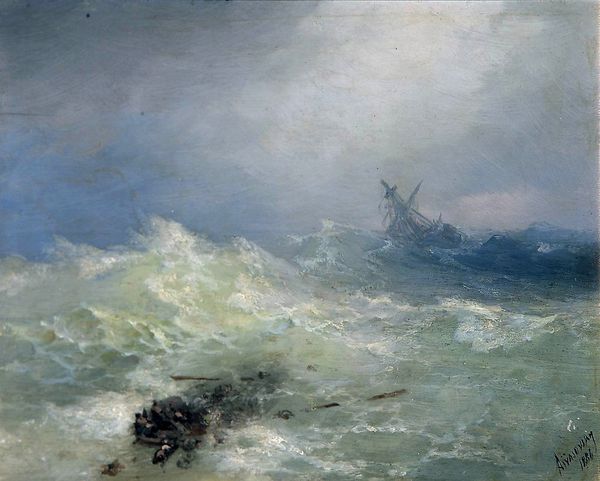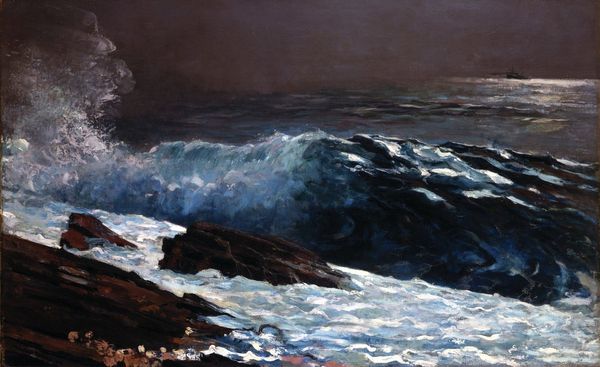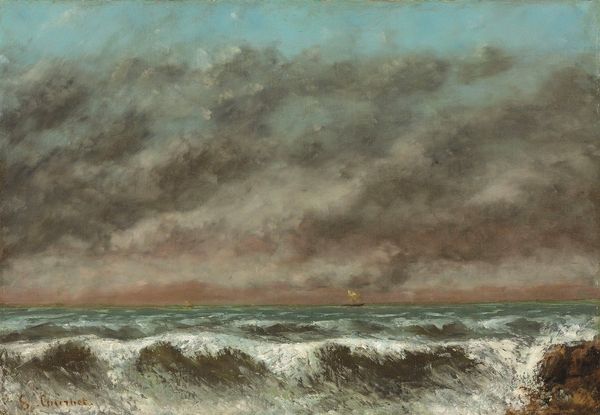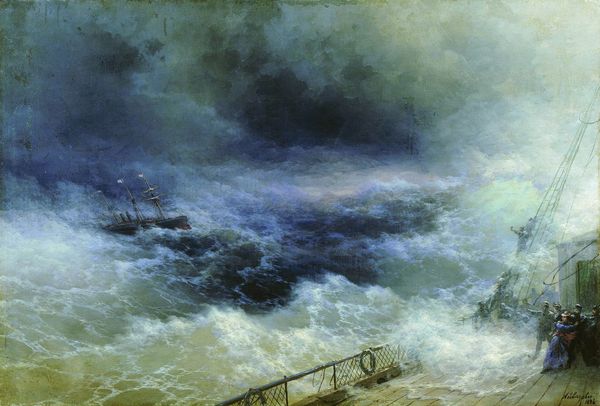
Dimensions: 49 x 42 cm
Copyright: Public domain
Curator: Ivan Aivazovsky’s "Sea," painted in 1881 using oil on canvas, plunges us into a tumultuous maritime scene. What are your first impressions? Editor: Utterly terrifying! I feel like I'm dangling from a mast about to be swallowed by that churning abyss. It's exhilarating and awful, all at once. The colors, those grays and sickly greens… they scream danger. Curator: Indeed. Aivazovsky was deeply fascinated by the power of the sea. He was, in many ways, a Romantic painter, enthralled by the sublime and the awe-inspiring force of nature. Editor: You can see it, can’t you? The way the light catches those monstrous waves. And the size, the scale… It feels biblical, like some sort of elemental wrath being unleashed. Is that a ship in the distance? It barely registers against that roiling… chaos. Curator: Yes, barely visible, and it's a rather deliberate compositional choice, setting the scene in Romantic mode through sheer emotion and raw energy that seeks a more intuitive connection between the individual and nature's grandness. His works became symbolic of Russian maritime power, bolstering national pride and a sense of destiny on the world's stage. Editor: Makes you wonder about those little dots of… figures clinging on. I am pretty sure that I would’ve opted for a nice cup of tea instead of facing that sea. What I find fascinating, though, is how something so still, this canvas, can convey such intense movement and threat. It's a dance of brushstrokes, a ballet of barely controlled paint. Curator: Aivazovsky’s skillful layering creates a sense of depth and constant movement that's why so many appreciate his command in maritime painting, so well capturing both the realism and the romanticism of sea battles, naval exploits, and, indeed, of pure elemental nature. Editor: He definitely captures that feeling of being completely, hopelessly vulnerable. You know, sometimes I think these grand, historical narratives get in the way of the sheer, visceral impact of art. All this political maneuvering and national pride… Sometimes a terrifying, beautiful sea is just a terrifying, beautiful sea. Curator: Perhaps... or perhaps that terrifying, beautiful sea also *became* a symbol in its time, consciously or unconsciously shaping how people perceived their place in the world. Food for thought as we turn to our next piece. Editor: Absolutely, it got me thinking... until next time!
Comments
No comments
Be the first to comment and join the conversation on the ultimate creative platform.
